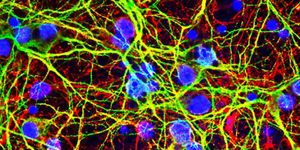C. auris Superbug Seen in More Patients Across US
The Centers for Disease Control (CDC) issued an alert in June 2016 about Candida auris; later that summer seven cases were described. The CDC has now reported 122 new cases of infection resulting from the C. auris bacterium. It’s considered a superbug because it’s very difficult to treat, and is primarily a threat to those faced with lengthy hospital stays.
The infections are typically occurring in older, chronically ill people in healthcare facilities and the CDC is focusing efforts on preventing transmission there. The infections have happened in three principle areas: Illinois, New Jersey and New York.
C. auris was first identified in Japan, and has managed to spread around the world in only about eight years. Scientists are concerned about it not only because it is often resistant to so many drugs like fluconazole, amphotericin B, and even echinocandins; it also has a very high mortality rate.
“This emerging fungal species has started to infect patients globally, causing invasive infections that are associated with a high death rate,” commented Mahmoud Ghannoum, PhD, MBA, FIDSA, Professor and Director of the Center for Medical Mycology at the Department of Dermatology at Case Western Reserve School of Medicine, and University Hospitals Cleveland Medical Center. “It is multidrug-resistant, and some strains isolated from patients are resistant to all commercially available antifungal drugs. Multidrug-resistance used to be reported for bacteria only, and now we must add fungi to the list.”
Related: Understanding the Dissemination of Antibiotic Resistance Genes
Ghannoum has led a study of 16 strains of C. auris, and is studying the effects of an investigational drug on the infection.
“Understanding the virulence of C. auris and showing that the investigational drug is effective may lead to the development of new medications to combat this emerging health threat,” said Ghannoum. “Eradication of Candida auris from hospitals is very difficult and in some cases has led to closing hospital wards.”
The fungi lurk on catheters, and those staying in the hospital for long periods of time are most at risk.
Sources: STAT News, Case Western Reserve University, CDC, Medscape








